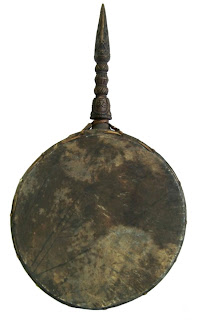Code : TT 129
Introduction :
Singing bowls (also known as Tibetan Singing Bowls, rin gongs, Himalayan bowls or suzu gongs) are a type of bell, specifically classified as a standing bell. Rather than hanging inverted or attached to a handle, singing bowls sit with the bottom surface resting. The sides and rim of singing bowls vibrate to produce sound characterized by a fundamental frequency (first harmonic) and usually two audible harmonic overtones (second and third harmonic).
Singing bowls are used worldwide for meditation, music, relaxation, personal well-being. They are used by a wide range of professionals, including health professionals, school teachers, musicians and spiritual teachers. They are popular in classrooms to help facilitate group activities and focus students' attention.
Singing bowls were historically made throughout Asia, especially Nepal, China and Japan. They are closely related to decorative bells made along the Silk Road from the Near East to Western Asia. Today they are made in Nepal, India, Japan, China and Korea.
簡介:
會唱歌的碗(座鐘)(又稱西藏頌缽、rin鑼,喜馬拉雅碗或suzu鑼),是鐘的一種,特別分類為座鐘。不是懸掛或連接到手柄,會唱歌的碗(座鐘)是放着演奏。碗兩側及邊緣振動,發出聲音,產生基本頻率(第一次諧波),通常有兩種聲音的諧波泛音(第二次及第三次諧波)。
會唱歌的碗(座鐘)在全世界相當普遍,作為冥想、音樂、放鬆及個人身心健康的用途。它們被廣泛的專業人士所採用,包括健康專業人員、學校教師、音樂家和精神治療的導師。它們被用於教室裡,以幫助促進小組活動及集中學生的注意力。
根據歷史,會唱歌的碗(座鐘)是在亞洲製造,如尼泊爾、中國和日本。它們與從近東到西亞沿絲綢之路製造的裝飾用鐘有密切關係。今天,它們在尼泊爾、印度、日本、中國和韓國製造。
Diameter : 10 cm
Height : 6.5 cm
Weight : 800 g
Materials : bronze, metal
Box : 13 x 13 x 9 cm
Made in Nepal
Enquiry 查詢 :
(for both Retail & Wholesale 零售及大量購買均可)
Tel : (852) 5343 3022
Email : hkmumu@mumuschool.org























































